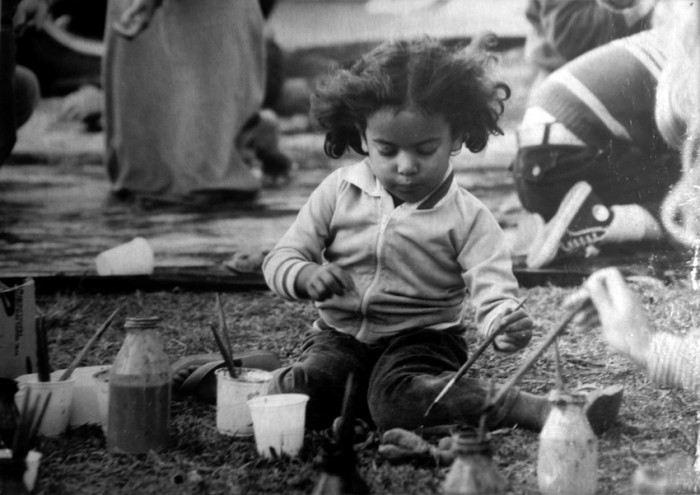I acknowledge the Gadigal people of the Eora Nation whose land I live and work on and pay my respects to Elders both past and present, their culture and continued connection to Country.
Keg de Souza is an artist of Goan ancestry who lives on unceded Gadigal land in Sydney. Architecturally trained, she creates social and spatial environments, making reference to her lived experiences of squatting and organising with projects that use plant and food politics, temporary architecture, publishing and radical pedagogy. De Souza also draws from personal experiences of colonialism to inform her layered projects that centre voices that are often marginalised, for learning about Place. Themes of displacement – through lenses such as colonialism and gentrification – filter through her work, sharing (often lesser-known) stories of plants, people and Place.
Exhibitions and projects include: Shipping Roots (2023), Inverleith House, Royal Botanic Garden Edinburgh; Nganga toornung-nge dharraga Bunjil (2022), Abbotsford Convent Co-commisioned with ACCA, Melbourne; Convivial City (2019), Open Plan Commission, South London Gallery; Common Knowledge and Learning Curves (2019), Griffith University Art Museum, Brisbane and (2018) Artspace, Sydney; The National: New Australian Art, (2017) AGNSW; 20th Biennale of Sydney and Setouchi Triennale (2016), Japan; Temporary Spaces, Edible Places: Vancouver and Preservation (2015) as part of a multi-year project with Contemporary Art Gallery, Vancouver; Temporality in Architecture, Food and Communities (2014), Delfina Foundation, London; Temporary Spaces, Edible Places: Isle of Skye (2014), Atlas Arts and If There’s Something Strange In Your Neighbourhood (2013), Ratmakan Kampung, Yogyakarta; 5th Auckland Triennial, 15th Jakarta Biennale and Vertical Villages (with ruangrupa) at 4A Centre for Contemporary Asian Art, Sydney.
Keg is a trained bookbinder and is represented by Booklyn Artist Alliance, NY for her artist’s books and zines which she has been publishing for over 20 years; has a Certificate in Botanical Illustration from The Royal Botanic Garden Edinburgh; holds a PhD, through the Wominjeka Djeembana Research Lab, MADA, Monash University titled: Relationality in Place: Radical Pedagogy and Decolonial Space; was the 2022 Parramatta Artists Studios Creative Fellow and received the 2024 Dahl Fellowship from Eucalypt Australia.
Keg is a part of the Food Art Research Network, an international network of established artists and researchers that engage with the politics and aesthetics of food and was a founding member of SquatSpace an artist collective exploring the poetics and politics of space..

